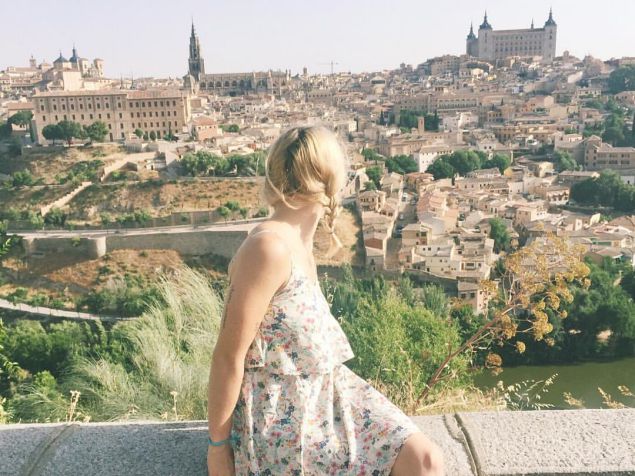Why did you choose this program?

Museums have always been fascinating to me. Every new place I go, I immediately seek out the museums and historic sites. This program was the perfect balance between work and pleasure.
For each city, we visited the sites I wanted to see most - like the Louvre, the Colosseum, and the Palacio Real - along with professors who lectured on the art history and architecture. Each new class was filled with so much information and history that was perfect for the course.
I had the incredible honor of touring places with professors who knew so much about them, and that made all the difference.
What did your program provider assist you with, and what did you have to organize on your own?
My university did not have this program as one of the accepted programs that could easily transfer credits back to my diploma, so I had to organize a bit on my own.
Since the program is so new, it was a bit hard for my home university to configure where the art history credits would transfer back to. However, IES was incredibly helpful with all of my questions and everything went smoothly up until my departure date.
What is one piece of advice you'd give to someone going on your program?
It's definitely a big decision to travel and study in three cities in a seven week timeline. It's a lot of packing up and moving, a lot of adjustment, and quite some time spent traveling. However, it's all so worth it.
For me, two weeks in each city was a great time to acclimate to the culture and learn about its history.
One piece of advice I'd give is to prepare for the cultural differences. Paris, Rome, and Madrid are so diverse and different, and comparing the three is enough to merit a headache. Relax and embrace the three thriving cities just as they are.
What does an average day/week look like as a participant of this program?
Each week consisted of two to three hour classes in either a classroom setting or at a location. Some days, we'd have two of these classes, which can be a bit exhausting to spend up to 6 hours talking history and art in museums.
We'd always have weekends free, and spare time in the evenings and mornings to explore the cities on our own.
Going into your experience abroad, what was your biggest fear, and how did you overcome it and/or how did your views on the issue change?
My biggest fear was terrorism. Just a few months before I was set to apply to the program, Paris was attacked. A few days before my departure, a flight from Paris disappeared over the Mediterranean. It's a very real threat to so many, and it honestly scared the crap out of me.
I was almost about to stay home for the summer, maybe spend it working or taking a few classes at my local university, when my mom said something incredibly insightful. She said, "Kelly, you can't stop your life because something scares you. Don't let them win."
So, I didn't let them win. I went overseas, I was vigilant and aware of my surroundings, and I was just fine.
Did you have any doubts about how you were spending your time abroad?
The biggest question I asked myself was: with only two weeks to explore a city, should I even travel to more cities over the weekends? The answer is - yes!
I loved Rome, but I took a weekend to travel to Florence and I am so happy I did. You travel abroad to explore, so explore away! See as much as you can in the time that you have.